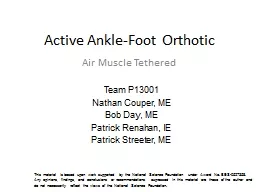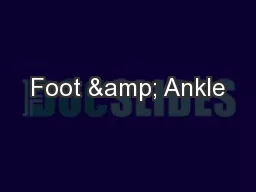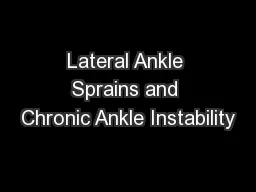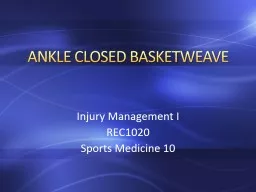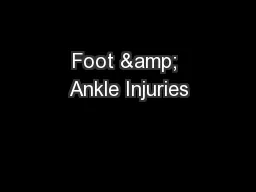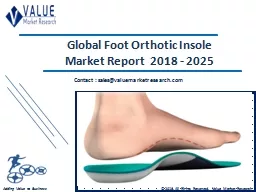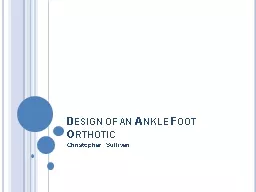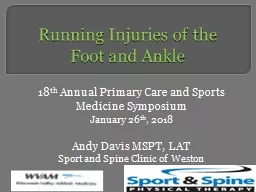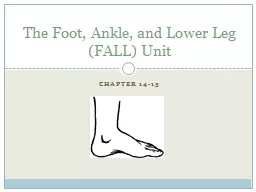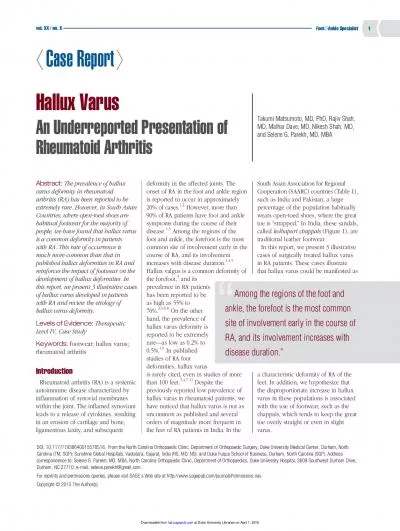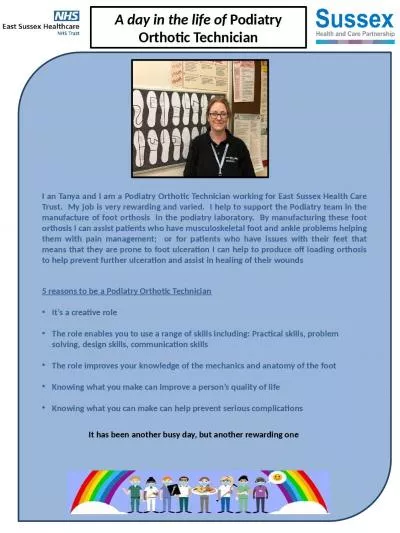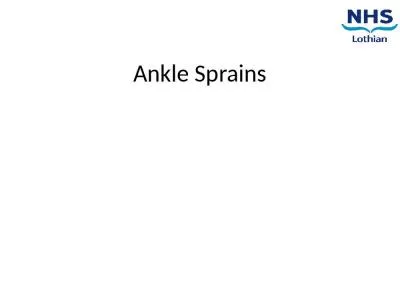PPT-Active Ankle-Foot Orthotic
Author : mitsue-stanley | Published Date : 2019-12-29
Active AnkleFoot Orthotic Air Muscle Tethered Team P13001 Nathan Couper ME Bob Day ME Patrick Renahan IE Patrick Streeter ME This material is based upon work supported
Presentation Embed Code
Download Presentation
Download Presentation The PPT/PDF document "Active Ankle-Foot Orthotic" is the property of its rightful owner. Permission is granted to download and print the materials on this website for personal, non-commercial use only, and to display it on your personal computer provided you do not modify the materials and that you retain all copyright notices contained in the materials. By downloading content from our website, you accept the terms of this agreement.
Active Ankle-Foot Orthotic: Transcript
Download Rules Of Document
"Active Ankle-Foot Orthotic"The content belongs to its owner. You may download and print it for personal use, without modification, and keep all copyright notices. By downloading, you agree to these terms.
Related Documents

